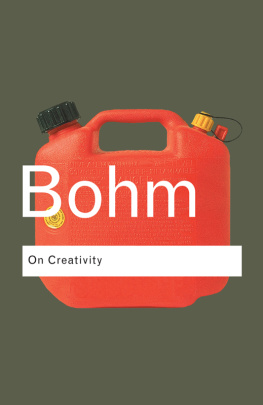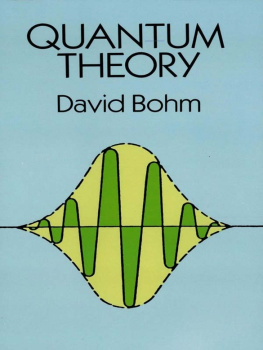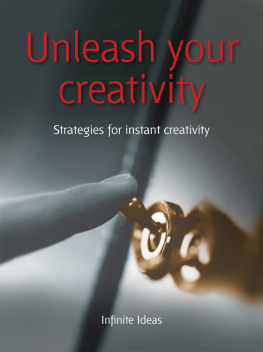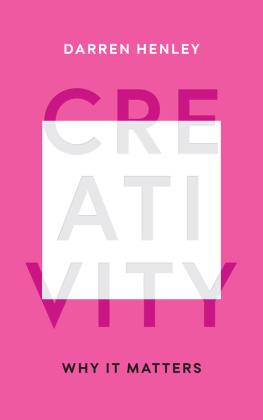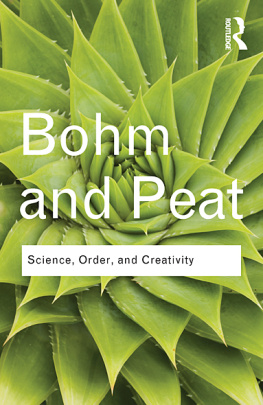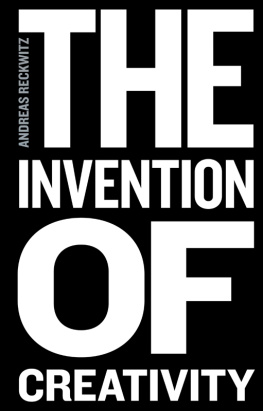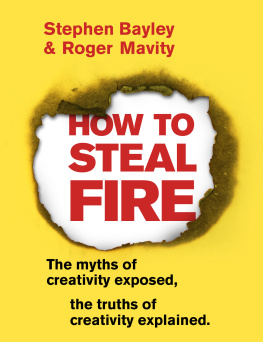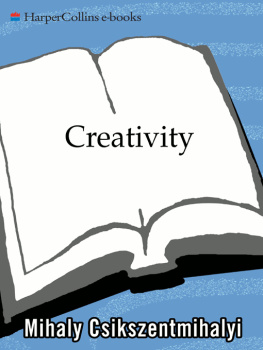On Creativity
An openness to the irreducible nature of the whole in both science and art summarizes the timeless philosophical stance of David Bohm. The delight to have On Creativity and On Dialogue made into Routledge Classics has special relevance to our era of fracture, contention and public duplicity.
Lynn Margulis, University of Massachusetts-Amherst
Bohm not merely tells us what creativity is and what blocks it, he also helps us to become creative ourselves.
Paavo Pylkkanen
A rare combination of depth and breadth...
Dr Rene Weber
Bohm is a cultured and engaging thinker
The Guardian
Bohms thoughts... are profound and stimulating
New Scientist
This is a brilliant book, of great depth and originality ...
Physics Today

Routledge Classics contains the very best of Routledge publishing over the past century or so, books that have, by popular consent, become established as classics in their field. Drawing on a fantastic heritage of innovative writing published by Routledge and its associated imprints, this series makes available in attractive, affordable form some of the most important works of modern times.
For a complete list of titles visit
www.routledgeclassics.com
David
Bohm
On Creativity
With a new preface by Leroy Little Bear,
University of Lethbridge
Edited by Lee Nichol

First published 1996 by Routledge
First published in Routledge Classics 2004
by Routledge
2 Park Square, Milton Park, Abingdon, Oxon, OX14 4RN
711 Third Avenue, New York, NY 10017 (8th Floor)
Routledge is an imprint of the Taylor & Francis Croup, an informa business
1996 Saral Bohm, for the original material by David Bohm;
Lee Nichol for selection and editorial matter.
Preface to Routledge Classics edition 2004 Leroy Little Bear
Index compiled by Indexing Specialists (UK) Ltd, Hove
All rights reserved. No part of this book may be reprinted or reproduced or utilised in any form or by any electronic, mechanical, or other means, now known or hereafter invented, including photocopying and recording, or in any information storage or retrieval system, without permission in writing from the publishers.
British Library Cataloguing in Publication Data
A catalogue record for this book is available from the British Library
Library of Congress Cataloging in Publication Data
A catalog record for this title has been requested
ISBN10: 0415336406
ISBN13: 9780415336406
P REFACE TO THE R OUTLEDGE C LASSICS E DITION
For a number of years I was among a small group of Native American colleagues at the University of Lethbridge who had been discussing similarities and differences between Native American concepts, ways of knowing, thought processes and Quantum Mechanics. It was in the mid- to late-1980s that I was first introduced to David Bohms book Wholeness and the Implicate Order by a physicist friend, Sam Kounosu.
To put it mildly, I was awe-struck by what I read in that book, by the creative thinking of the author and by the similarities to our Blackfoot ways of thinking. Bohms thoughts and ideas struck a deep rapport with me. I immediately wanted to read more of his books and dreamt about the possibility of meeting the man himself. I felt blessed that things worked out, that I did get to meet David Bohm in 1989 at The Farm, north of New York, where he would make his stopovers on his trips to the United States from London.
At that first meeting, I distinctly remember getting into a deep dialogue with him about language and how a particular language leads the speaker down a particular thinking pathway. We talked late into the night about English and Blackfoot which is my native and first language. At that first meeting we seemed to have struck a deep chord that resulted in intellectual nurturing for both of us. My second blessing was in a science dialogue setting with the man himself. A dialogue in Kalamazoo, Michigan, was sponsored and organized by the Fetzer Institute in April of 1992 to specifically explore with a larger group of Native Americans and Western scientists what we had begun to discuss at the first meeting. It was my first introduction to Bohmian-style dialogues. Again, I was struck by the similarity between Bohms idea of dialogue, where one is required to shed personal and cultural tacit infrastructures so as to allow a person to engage in talk about an idea, a concept, an issue, a concern, in a setting that eschews fear and agendas, and what has become widely and popularly known as Native American talking circles. Between the two, all the same principles apply. Since that dialogue with David Bohm, a group of us have continued to hold dialogues in his memory.
Presently, I feel thrice blessed by this opportunity to write a foreword for his book On Creativity, a collection of previously unpublished papers on creativity edited by Lee Nichol. Not many people would associate science with art and creativity. Even fewer people would associate aesthetics with science. Over the years since I first read Wholeness and the Implicate Order, I have come to greatly appreciate David Bohms openness to the new, to difference, and to possibilities arising out of boundary crossings into different disciplines, cultures, and ways of knowing, as well as his appreciation of science as art and beauty. Herein I would like to explain how and why his thoughts and ideas on creativity find a fertile soil in Blackfoot ways of knowing.
Blackfoot philosophy includes ideas of constant motion/constant flux, of all creation consisting of energy waves and There are similarities between Blackfoot and other North American Indians such as Navajo. Gary Witherspoon, a student of Navajo art and language, articulates well one of these similarities:
the assumption that underlies this dualistic aspect of all being and existence is the world is in motion, that things are constantly undergoing processes of transformation, deformation, and restoration, and that the essence of life and being is movement.
Let me repeat myself pursuant to another foreword I wrote for a book on Native American Science. The ideas expressed therein are appropriate for the purpose at hand. The constant flux notion results in a spider web network of relationships. In other words, everything is interrelated. If everything is interrelated, then all of creation is related. If human beings are animate and have spirit, then all my relations must also be animate and must also have spirit. What Blackfoot refer to as spirit and energy waves are the same. All creation is a spirit. Everything in creation consists of a unique combination of energy waves. In other words, what appears as material objects in space is simply the manifestation of a unique combination of
Renewal is an important aspect of the Native American paradigm. From the constant flux, Native Americans have detected certain regular patterns, be they seasons, migrations of animals, or cosmic movements. This gives rise to the view that creation is a continuous process but certain regularities that are foundational to our continuing existence must be maintained and renewed. If these foundational patterns are not maintained and renewed, we will go the way of the dinosaurs. We will be consumed by the constant flux. Hence, the many renewal ceremonies in Native American societies. In the Blackfoot mind, what we know is simply a temporary marking in the flux, which is then used as a reference point. One can say that the temporary reference point is what constitutes our reality. If that reality is not re-created, a different reality will come into being. A new reality may not include our present reality. Thus the felt need to renew.
Next page
